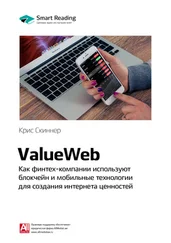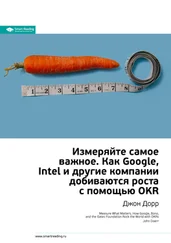OECD. 1968. Gaps in technology: General report. Paris: OECD, 14, cited in B. Godin, The rise of innovation surveys: Measuring a fuzzy concept. Project on the History of Sociology of STI Statistics, Working Paper No. 16. London: Routledge.
Ibid.; Freeman, C. 1965. Research and development in electronic capital goods. National Institute of Economic Review 14 (November), 40–97. Also cited by Usselman, S. W. 1993. IBM and its imitators. Business and Economic History 22, 2, p. 17.
Diamond, J. 2005 (1997). Guns, germs and steel. New York: Norton; Westney, D. E. 1987. Imitation and innovation: The transfer of Western organizational patterns in Meiji Japan. Cambridge: Harvard University Press.
Bonabeau, E. 2004. The perils of the imitation age. Harvard Business Review, June, 45–54.
O’Brien, J. 2008. Interview with author, December 16.
Dunfield, S. 2008. Interview with author, November 18.
Diamond, Guns, germs and steel.
Data Monitor. 2008. Toys and games in the United States: Industry profile. 0072–0778, January. Table 4, 12.
The World Bank. 2008. Global economic prospects 2008: Technology diffusion in the developing world. Washington, DC: The World Bank.
Kohrt, C. 2008. Interview with author, March 5.
Diamond, Guns, germs and steel.
Comin, D., and Hobijn, B. 2003. Cross-country technology adoption: Making the theories face the facts. Staff Report No. 169, Federal Reserve Bank of New York; Yorgaso, D. R. 2007. Research and development activities of US multinational companies. Survey of Current Business, March 2007.
Zeng, M., and Williamson, P. J. 2007. Dragons at your door: How Chinese companies will disrupt global competition. Boston: Harvard Business School Press.
Lawton, C., Kane, Y. I., and Dean, J. 2008. US upstart takes on TV giants in price wars. Wall Street Journal, April 15, Al; Shenkar, O. 2004. The Chinese century. Philadelphia: Wharton School Publishing.
Aeppel, T. 2008. US shoe factory finds supplies are Achilles’ heel. Wall Street Journal, March 3, B1.
Karhu, K., Taipale, O., and Smolander, K. 2007. Outsourcing and knowledge management in software testing. 11th International Conference on Evaluation and Assessment in Software Engineering, April 2–3, Keele University, Staffordshire, U. K.
Balconi, M. 2002. Tacitness, codification of technological knowledge and the organization of industry. Research Policy 31, 357–379; Hurley, S., and Chater, N., eds. 2007. Perspectives on imitation: From neuroscience to social science. Cambridge, MA: MIT; Cowan, R., and Foray, D. 1997. The economics of codification and the diffusion of knowledge. Industrial and Corporate Change 6, 3, p. 611; Cowan, R., David, P. A., and Foray, D. 2000. The explicit economics of knowledge codification and tacitness. Industrial and Corporate Change 9, 2, 211–253; Neisser, U. 1963. The imitation of man by machine. Science 139, 3551, 193–197.
Daley, C. 2008. Interview with author, November 18.
Hurley and Chater, eds., Perspectives on imitation: From neuroscience to social science.
Cowan and Foray, The economics of codification and the diffusion of knowledge.
Ibid.
Byron, E. 2008. A new odd couple: Google, P&G, swap workers to spur innovation. Wall Street Journal, November 18, 1.
Cowan and Foray, The economics of codification and the diffusion of knowledge, 611.
Cowan, David, and Foray, The explicit economics of knowledge codification and tacitness.
Neisser, The imitation of man by machine. There is a common confusion in the strategy literature between tacit and complex knowledge. Complex knowledge is especially amenable to codification, and in fact its very complexity requires codification as a way to deal with multiple variables and relationships.
Ludlam, T. 2008. Interview with author, May 8.
Diamond, Guns, germs and steel, 407.
Cho, D. S., Kim, D. J., and Rhee, D. K. 1998. Latecomer strategies: Evidence from the semiconductor industry in Japan and Korea. Organization Science 9, 4, 489–505.
Agarwal, R., and Gort, M. 2001. First-mover advantage and the speed of competitive entry, 1887–1986. Journal of Law and Economics XLIV, 161–177.
Diamond, Guns, germs and steel; Westney, Imitation and innovation: The transfer of Western organizational patterns in Meiji Japan; Cho, Kim, and Rhee. Latecomer strategies; Agarwal and Gort. First-mover advantage and the speed of competitive entry, 1887–1986; Bryman, A. 1997. Animating the pioneer versus late entrant debate: An historical case study. Journal of Management Studies 34, 3, 415–438.
Collins, H. M. 1974. The TEA set: Tacit knowledge in scientific networks. Science Studies 4, 165–186, cited in Cowan, David, and Foray, The explicit economics of knowledge codification and tacitness.
2007 Generics Report. 2007. Drug Store News, www.drugstore news.com, February 12.
All together now. 2008. Economist, July 26.
Jargon, J., and Zimmerman, A. 2009. Brand-name food makers woo retailers with displays. Wall Street Journal (online), February 17, citing the Private Label Manufacturers Association and ACNielsen; Europe eats on the cheap. 2008. Wall Street Journal, September 30, B1; ACNielsen. 2005. The power of private label 2005: A review of growth trends around the world. New York: ACNielsen.
Mansfield, E., Schwartz, M., and Wagner, S. 1981. Imitation costs and patents: An empirical study. Economic Journal 91 (December), 907–918; Levin, R. C, Klevorick, A. K., Nelson, R. R., and Winter, S. G. 1987. Appropriating the returns from industrial research and development. Brookings Papers on Economic Activity 3, 783–831. Another study reports that patents increased imitation costs by 30 percent for pharmaceuticals, 20 percent for chemicals, and 7 percent for electronics. See Mansfield, Schwartz, and Wagner, Imitation costs and patents: An empirical study.
You, К., and Katayama, S. 2005. Intellectual property rights protection and imitation: An empirical examination of Japanese FDI in China. Pacific Economic Review 10, 4, 591–604.
Gillen, D., and Lall, A. 2004. Competitive advantage of low cost carriers: Some implications for airports. Journal of Air Transport Management 10, 41–50. Bill Diffenderffer, the former head of Skybus, argues that Southwest no longer enjoys a wage advantage and that most of its profits in recent years are attributed to its fuel hedging program; Diffenderffer, W. 2008. Interview with author, October 23.
Читать дальше
Конец ознакомительного отрывка
Купить книгу












